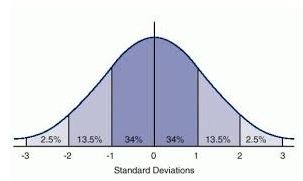
11 Introduction to Probability Unit Review
Quiz
•
Mathematics
•
11th Grade
•
Hard
+13
Standards-aligned

Matthew Kilgore
Used 42+ times
FREE Resource
40 questions
Show all answers
1.
MULTIPLE CHOICE QUESTION
15 mins • 1 pt
Tags
CCSS.HSS.IC.A.2
2.
MULTIPLE CHOICE QUESTION
15 mins • 1 pt
Tags
CCSS.HSS.CP.A.1
3.
MULTIPLE CHOICE QUESTION
15 mins • 1 pt
Tags
CCSS.HSS.CP.A.1
4.
MULTIPLE CHOICE QUESTION
15 mins • 1 pt
Tags
CCSS.HSS.CP.A.2
CCSS.HSS.CP.A.3
CCSS.HSS.CP.A.4
CCSS.HSS.CP.B.8
5.
MULTIPLE CHOICE QUESTION
15 mins • 1 pt
6.
MULTIPLE CHOICE QUESTION
15 mins • 1 pt
[Assumes all outcomes are equally likely.]
Tags
CCSS.HSS.CP.A.3
CCSS.HSS.CP.B.6
CCSS.HSS.CP.B.8
7.
MULTIPLE CHOICE QUESTION
15 mins • 1 pt

Tags
CCSS.HSS.CP.A.2
CCSS.HSS.CP.A.3
CCSS.HSS.CP.B.8
Create a free account and access millions of resources
Similar Resources on Wayground

40 questions
Two Way Tables Overview
Quiz
•
9th - 12th Grade

35 questions
TSI Math - Review
Quiz
•
11th - 12th Grade

45 questions
TSIA 2.0 Practice Test #2
Quiz
•
9th - 12th Grade

38 questions
Statistics and Probability Quiz
Quiz
•
11th Grade

39 questions
Grade 6 prob
Quiz
•
6th Grade - University

35 questions
Mean and Standard Deviation of Probability Distributions
Quiz
•
11th - 12th Grade

35 questions
Alg2 Sem2 Final Exam Review
Quiz
•
11th Grade

40 questions
AP Statistics Course Check #1
Quiz
•
9th - 12th Grade
Popular Resources on Wayground

10 questions
Video Games
Quiz
•
6th - 12th Grade

20 questions
Brand Labels
Quiz
•
5th - 12th Grade

15 questions
Core 4 of Customer Service - Student Edition
Quiz
•
6th - 8th Grade

15 questions
What is Bullying?- Bullying Lesson Series 6-12
Lesson
•
11th Grade

25 questions
Multiplication Facts
Quiz
•
5th Grade

15 questions
Subtracting Integers
Quiz
•
7th Grade

22 questions
Adding Integers
Quiz
•
6th Grade

10 questions
Exploring Digital Citizenship Essentials
Interactive video
•
6th - 10th Grade
Discover more resources for Mathematics

20 questions
Parallel lines and transversals
Quiz
•
9th - 12th Grade

9 questions
Geometry and Trigonometry Concepts
Interactive video
•
9th - 12th Grade

31 questions
2.1.3 Angle relationships
Quiz
•
10th - 11th Grade

10 questions
Angle Relationships with Parallel Lines and a Transversal
Quiz
•
9th - 12th Grade

11 questions
Solving Multistep Equations Quiz
Quiz
•
11th Grade

10 questions
Intro to Parallel and Perpendicular Slopes
Quiz
•
9th - 12th Grade

15 questions
Absolute Value Equations and Inequalities
Quiz
•
9th - 11th Grade

15 questions
Intro To Compound Inequalities
Quiz
•
9th - 12th Grade


